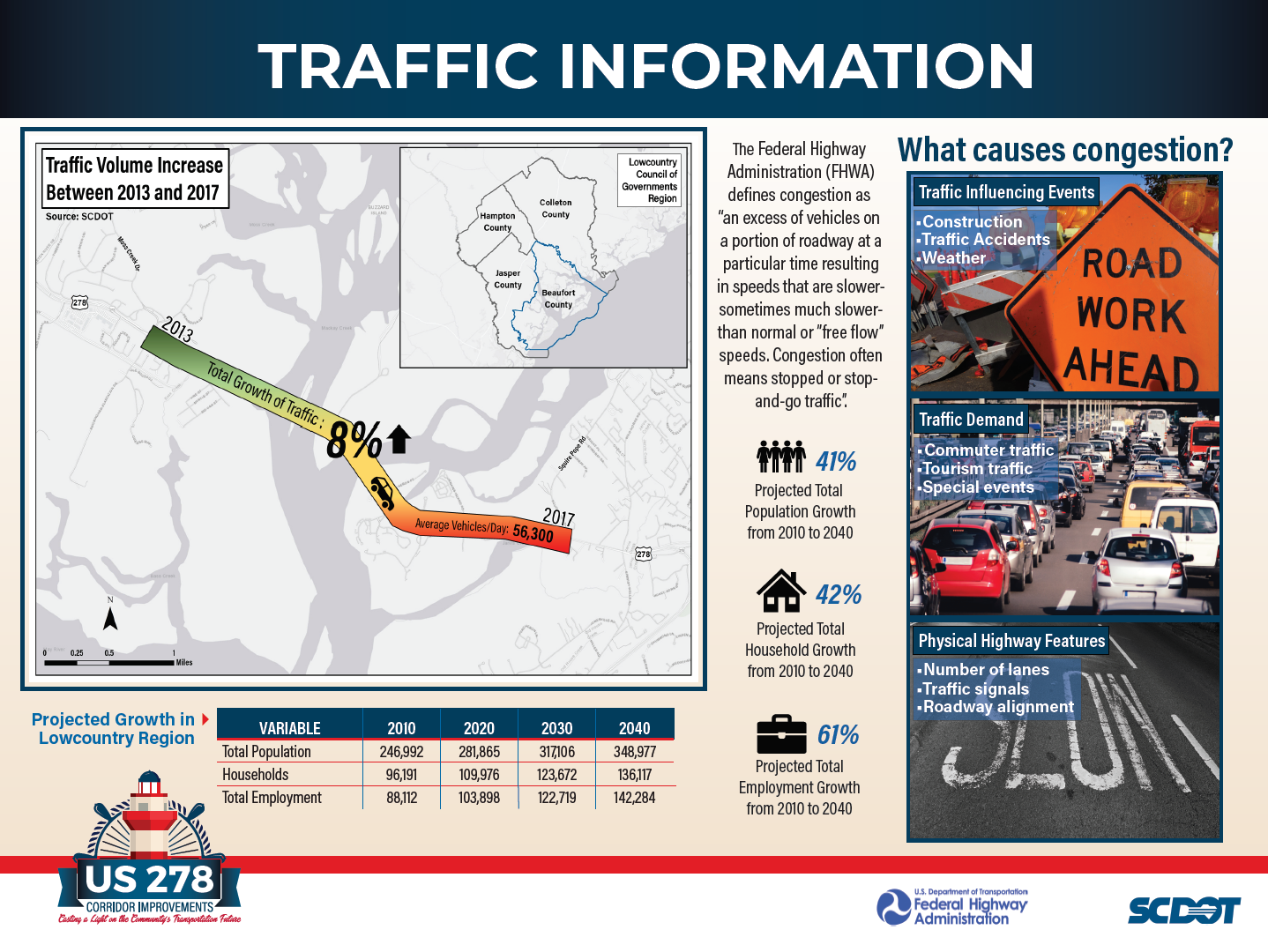A public information meeting was held on Thursday, September 27, 2018, from 6:00 pm and 8:00 pm at the Hilton Head Island High School. The purpose of the public information meeting was to introduce the project to the community, gather initial comments from the public, identify the needs for the project, and help identify concerns people may have about the improvements or the project's potential impacts to the natural and human environments.
We value your input and would like to hear from you. Please use the comment form to submit your message about the project.
Information provided at the meeting can be found below.
Presentation Boards
Traffic Information
This board presents information on traffic growth on the corridor from 2013 to 2017. The board also shows projected population, household, and employment growth numbers in the Lowcountry Region, which comprises the four counties that comprise the Lowcountry Council of Governments region (Beaufort, Jasper, Colleton, and Hampton counties). Lastly, information on congestion and its causes is displayed.
SCDOT Noise Mitigation
This helpful video from SCDOT explains how increased growth and construction results in higher noise levels in communities. It illustrates how SCDOT works to mitigate noise impacts of these projects during and after construction. Existing noise measurements prior to project construction are measured and then estimated what they will be like in 20 years based on proposed highway changes and increased traffic. Once these studies are complete, SCDOT evaluates these numbers to determine if a noise wall or other noise-mitigating features are necessary.






